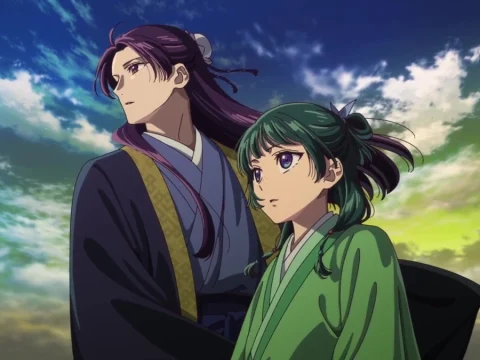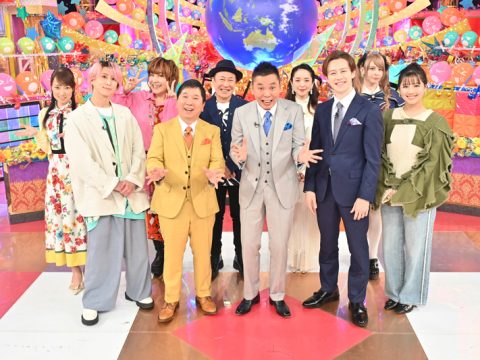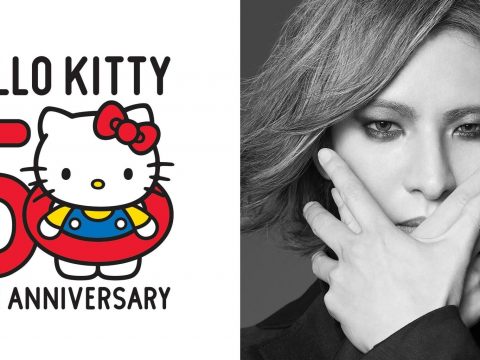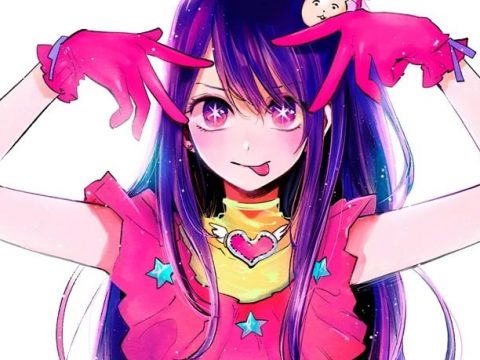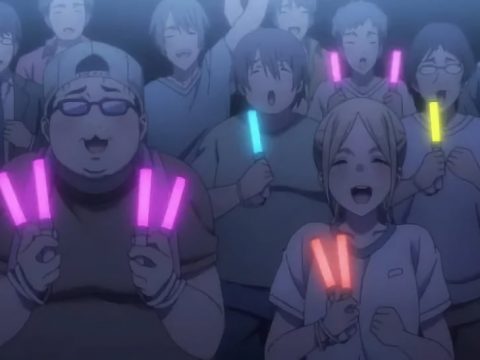Sports manga and anime haven’t traditionally been released here in the US very often. In Japan, they tend to make up some of the most popular, enduring titles and several have been extraordinarily influential classics. Baseball in particular is a major sport in Japan, so Big Windup! has a substantial number of fellow manga and anime that have never (and for many, probably will never) been released domestically. The sheer number and variety of baseball manga and anime could easily warrant at least a short book to cover comprehensively, so a full history is rather beyond the scope of this article. But I’ll try here to present as comprehensive a listing of baseball anime as possible.
Star of the Giants (Kyojin no Hoshi)
There’s really nowhere else to start than Star of the Giants, penned by legendary scenario writer Kajiwara Ikki (Ashita no Joe [as Asao Takamori], Tiger Mask) and illustrated by Noboru Kawasaki. It was the first sports anime, helped launch Weekly Shonen Magazine into sales over a million in the late 60’s, is inextricably tied to the real Yomiuri Giants baseball team, and has left a massive and indelible mark on Japanese pop culture. If you watch any sports or martial arts anime, you’ve stood in Star of the Giants‘ shadow–it debuted the exaggerated special wind-up and pitching sequences, the burning passion sports epic, the tearful melodramatic speeches and embraces between team members and coaches, and most importantly it created Training Hell.
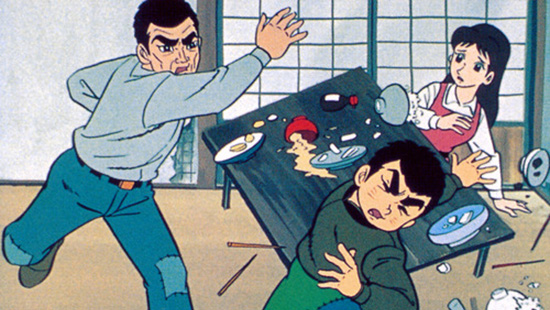 Japanese readers ranked Ittetsu Hoshi as the #1 worst anime dad in June 2015.
Japanese readers ranked Ittetsu Hoshi as the #1 worst anime dad in June 2015.The hellish preparation that protagonist Hyuma Hoshi endured as a child became so famous that it’s even the touchstone used in interviews and biographies for real life Japanese baseball star Ichiro Suzuki’s own incredibly tough childhoold training. It’s possible that Star of the Giants helped to keep baseball as popular in Japan as it is, given the way it’s referenced among players as a primary part of their inspiration for joining up and it in turn spawned so many other series that may have equally affected even more aspiring players. It may be impossible to overestimate the importance of this series to manga, anime and Japanese sports culture.
The series follows Hyuma Hoshi, a young boy with promising pitching talent, who wants to follow in the footsteps of his father, a professional baseball player. He goes through grueling training to develop his skills, eventually joining the real-life Yomiuri Giants team. (Interestingly, the other Giants members were all real players, including legendary pitcher Masaichi Kaneda.) Despite realizing his dream of becoming a professional, the world of baseball is a harsh one and the series is remembered so strongly partially due to its depressing conclusion.
The original manga spanned 19 volumes and was adapated a number of times. There were three TV series: Star of the Giants (1968-1971) with 182 episodes,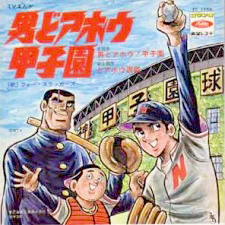 New Star of the Giants (1977-1978) with 52 episodes, and New Star of the Giants II (1979) with 23 episodes. There were also about 5 compilation movies produced from 1969 through 1977, plus a special crossover episode with Astro Boy.
New Star of the Giants (1977-1978) with 52 episodes, and New Star of the Giants II (1979) with 23 episodes. There were also about 5 compilation movies produced from 1969 through 1977, plus a special crossover episode with Astro Boy.
Otoko do Ahou! Koushien
The first of the Shinji Mizushima block of baseball hits, Otoko do-Ahou! Koushien ran in Shonen Sunday from 1970-1975 for a total of 28 volumes. During 1970-1971, 156 10-minute episodes were produced for TV. The series isn’t Mizushima’s best known series (we’ll get to that in a bit) but it was well regarded enough that an additional followup story was done for Shonen Sunday‘s 40th anniversary in 1999.
The series is about Fujimura Koushien, an incredibly straightforward and simple (to the point of being kind of stupid) boy named for the famous Koushien stadium of high school baseball fame. Like Fujimura’s personality, his pitching is straight on, relying on strong-arm fastballs. Along with his teammates, Fujimura fights to conquer his namesake tournament and advance to a career in the pros.
Apache Baseball Team (Apatchi Yakyuugun)
This Toei series, based off a manga by Kobako Hanato and Sachio Umemoto, ran from 1971-1972 for a total of 26 episodes. It follows a former high school championship pitcher, Takeshi Dojima, who moves out to a rural mountain village to become a baseball coach. There he teaches a group of poor and delinquent youth, and tries to lead them into the major high school baseball tournament.
This seems to be more of a cult hit than anything, and is difficult to come by. Though the major directing duties were handled by Kazuya Miyazaki, several episodes were directed by future Ghibli star Isao Takahata (Grave of the Fireflies, Only Yesterday).
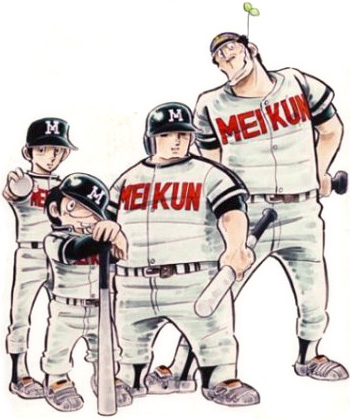 Dokaben
Dokaben
Following on the heels of Otoko do Ahou! Koushien and the next huge title after Star of the Giants is Shinji Mizushima’s Dokaben, a 48 volume smash hit manga serialized in Weekly Shonen Champion from 1972-1981. The series was adapted into a 163 episode TV anime starting in 1976. It continued to rank in the top 100 on wide-ranging favorite anime polls and its distinctive art style, particularly the “rubbery” way it conveys extreme energy and motion, continues to be noted by comics scholars like Scott McCloud and Fred Schodt.
The series revolves around heavy eater Taro Yamada (the title, Dokaben, is a reference to a type of bento that he likes to eat) and his middle school baseball teammates. It continues to follow the characters in their baseball careers through high school and into the pros, with followup manga like Dai Koushien, Dokaben Pro Baseball Story and Dokaben SuperStars (which is still showing up on top comic sales rankings in Japan).
Song of Baseball Enthusiasts (Yakyuukyou no Uta)
Based off a 17 volume series (1972-1976) by Shinji Mizushima, the author of Dokaben, this 25 episode anime started in 1977. Though less famous than Dokaben, it’s high on my licensing wishlist that will never, ever happen. The reason is that, in a rare move for a shonen baseball series, it focuses on a star female pitcher who can compete with regular baseball pros, the manager who fights to get her admitted into standard teams, and two separated twin brothers who find each other through the sport. It’s a love song to youth and baseball!
 Captain
Captain
This series, based off a Monthly Shonen Jump manga by Akio Chiba that ran from 1972-1979, was adapted into two 1980 TV anime movies. The movies were recut into a movie release in 1981 and in 1983 the series finally received a 26 episode TV adaptation.
The story in Captain is somewhat unorthodox, as the story features the Captain position of the Nakano baseball club rather than a particular individual. When one Captain graduates, the story focuses on the next person to take over.
Nine
Mitsuru Adachi’s first original work, Nine was serialized in Monthly Shonen Sunday Zoukan during 1978-1979. It was later adapted into several TV anime movies during 1983-1984. It was fairly successful, but ultimately only the lead up to Adachi’s huge breakthrough with Touch (see below).
Similar to Touch, the series is a blend of sports and romance centered around two boys and one girl, but it has a rather more lighthearted bent. Track star Katsuya Niimi and judo champion Susumu Karasawa are about to start high school. Before entering they meet Yuri Nakao, daughter of the school’s baseball coach, crying over a lost match. It turns out that the team isn’t doing well at all, and will get shut down if they don’t turn their record around. Wanting to help Yuri and feeling bad for the team, the two decide to abandon their previous sports careers and join the baseball team in hopes of taking them all the way to Koushien.
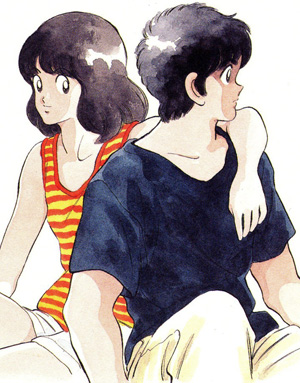 Touch
Touch
Mitsuru Adachi is a household name and a recognized master of storytelling through manga, and Touch is probably the key series that put him there. Serialized in Shonen Sunday from 1981-1986, it received multiple anime adaptations: a 101 episode TV series from 1985-1987, three compilation movies, and two follow-up TV specials in 1998 and 2001. The original TV series is one of the highest rated anime of all time. Touch stands as one of the most famous and beloved anime and manga, with its blend of deft, realistic characterization, romance and sports drama.
The series revolves around three major characters: identical twin brothers Kazuya and Tatsuya Uesugi, and their childhood friend Minami Asakura. The three of them have been neighbors since they were born and are incredibly close. There’s even a shared clubhouse set up in the back yards for the three of them to share. In their teens, the three are still as close as ever but romantic tensions begin to intrude. Everyone assumes that cute, responsible Minami will end up with Kazuya, the star student and athlete, over slacker Tatsuya but it may not be the case after all. Their happy, peaceful life and Kazuya’s baseball aspirations are cruelly interrupted, however, when Kazuya is killed saving a child from being run over by a truck. Minami and Tatsuya are left to continue on, brought together and pushed forward by Kazuya’s memory–Minami in competitive gymnastics, and Tatsuya attempting to pick up where his brother left off and guide the team to Koushien.
Meimon! The Third Baseball Club (Meimon! Daisan Yakyuubu)
This 40 episode series from 1988 was based off of Toshiyuki Mutsu’s 10 volume gag manga, serialized in Shonen Magazine. Apparently popular enough due to the length of both manga and anime, it doesn’t seem to be particularly well known anymore.
The series chronicles a crappy third-string high school baseball club that has to fight not only against teams from rival schools, but also the superior Number 1 and Number 2 clubs at their own school.
Miracle Giants Domu-kun
This short series from 1989, clocking in at only 10 episodes, was based off a manga by legendary creator Shotaro Ishinomori (Cyborg 009, Kamen Rider, Kikaider).
Taking the usual exaggerated baseball elements even further, the series follows a fifth-grade baseball prodigy named Domu who was taught a magical, super-powerful pitch by his late father, a legendary Yomiuri Giants player. Witnessing the ultra pitch, the Giants immediately recruit Domu (you know, despite the fact that he’s in elementary school – they compromise by only having him allowed to play home games) and become unbeatable. He proceeds to play against a number of real-life star players as well as other fictional characters like cute girl disguised as a boy Melody Norman and ex-bullfighter Don Carlos.
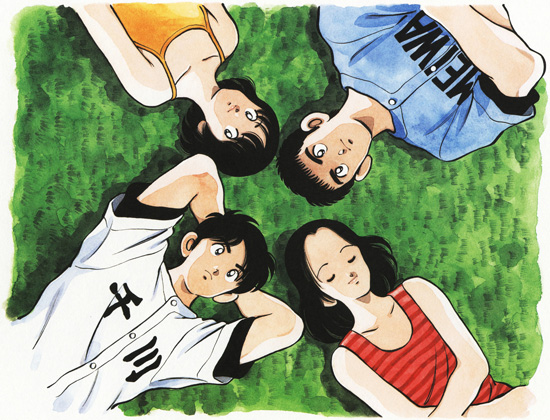
H2
After Touch, Mitsuru Adachi worked on several shoujo romances and a fantasy romantic comedy before returning to baseball manga with H2. Serialized in Shonen Sunday from 1992-1999, it was popular enough to span 34 volumes and receive a 41 episode TV anime adaptation in 1995-1996.
Hiro Kunimi, Hideo Tachibana and Atsushi Noda were middle school baseball teammates, and helped lead their team to an unbeaten record and multiple national championship wins. It all fell apart, however, when Hiro and Noda were both diagnosed with career-ending injuries, ending any hopes of making it to Koushien. Hiro and Noda switch to other sports less affected by their injuries and attend a school without any baseball team. Hideo splits off to a highly ranked baseball school to continue playing. But when Hiro and Noda learn that the doctor who diagnosed them was a quack, they become determined to talk their baseball-hating headmaster into forming a new team and heading straight for Koushien.
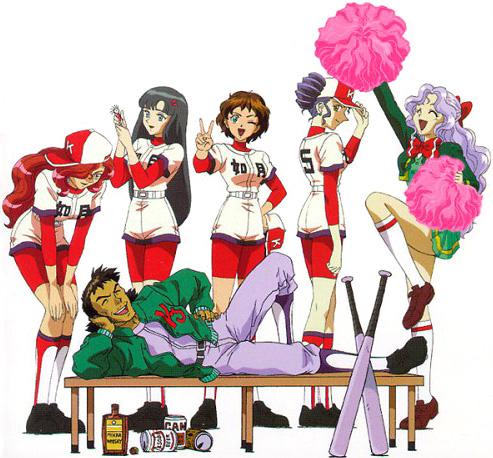
Princess Nine
One of the few series here not based on an original manga, Princess Nine is a 26 episode TV anime that aired on NHK in 1998. Despite being only a minor series, it’s notable for being the first baseball anime commercially released in America, by ADV in 2001.
The series is also one of the few featuring female protagonists. Following in the footsteps of Song of Baseball Enthusiasts and perhaps setting the stage for this year’s Taisho Baseball Girls, it centers on Ryo Hayakawa, daughter of a disgraced rising star pitcher. Determined to succeed her father and prove that girls are just as capable at sports as boys, Ryo leads the baseball team at Kisaragi School for Girls. Their aim is to make it all the way through the National High School Baseball Championship to qualify for and win the famous Koushien tournament.
Azusa Will Help! (Azusa, Otetsudai Shimasu!)
This is a weird little OAV from 2004, animated by Tokyo Movie Shinsha after the script won Animax channel’s Animax Taishou scriptwriting contest. It’s quite short, clocking in at only one 45-minute episode. It also stands out a bit from the other baseball anime as it’s also a sci-fi comedy.
Azusa Will Help takes place in the future, when robot athletes have become legal. Karugamo High’s baseball team is already doing badly, and their coach is fundamentally opposed to the use of robots for sport. But when they lose players after a particularly bad game, leaving them with too few to remain active, main character Shunpei decides it might be time to invest in a robot after all. Unfortunately they don’t have very much money, so the only robot they can possibly afford is an outdated model of maid robot who knows nothing about baseball!
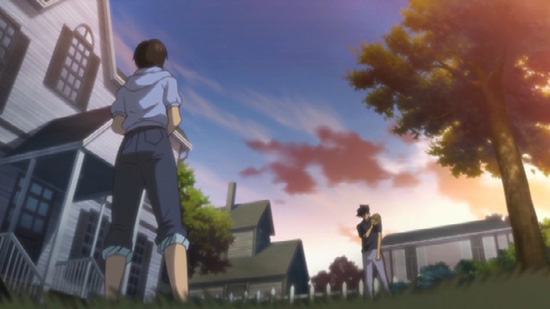
MAJOR
MAJOR is undoubtedly the current baseball giant. Based on a Shonen Sunday title by Takuya Mitsuda, the manga began in 1994 and is still going at around 71 collected volumes. The TV anime adaptation began airing in 2004 and just completed its 5th season at 129 episodes. An anime movie was also released in 2008, bridging the storyline gap between the first two seasons.
MAJOR follows the life story of baseball genius Goro Honda from kindergarten all the way to the professional league. Goro’s father Shigeharu was a pro pitcher wavering between the major and minor league, and Goro wanted nothing more than to become a pro like his dad.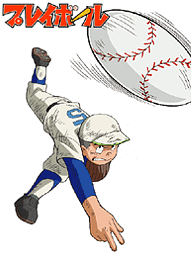 A serious arm injury ends Shigeharu’s career as a pitcher, but unwilling to quit baseball or let his son down, Shigeharu successfully makes the switch to batter and makes it back to the majors. Sadly, tragedy strikes again but Goro only becomes more determined to succeed his father as a star pitcher in the major leagues.
A serious arm injury ends Shigeharu’s career as a pitcher, but unwilling to quit baseball or let his son down, Shigeharu successfully makes the switch to batter and makes it back to the majors. Sadly, tragedy strikes again but Goro only becomes more determined to succeed his father as a star pitcher in the major leagues.
Play Ball
The original manga for Play Ball, by Akio Chiba, ran in Weekly Shonen Jump from 1973-1978, concurrently with Chiba’s other hit baseball series Captain. It wasn’t until 2005, however, that it was adapted into a TV anime with a second series following in 2006. The original manga won the Shogakukan Manga Award for shonen along with Captain.
Takao Taniguchi was a baseball captain in middle school, but continuing a game despite broken fingers costs him his career. During high school he joins the soccer club instead, but never finds the passion for it that he had for baseball. Unable to fully devote himself to soccer, he decides to return to baseball only to find the school’s team full of inexperienced, lackluster players. Under Taniguchi’s guidance, however, the team begins to improve.
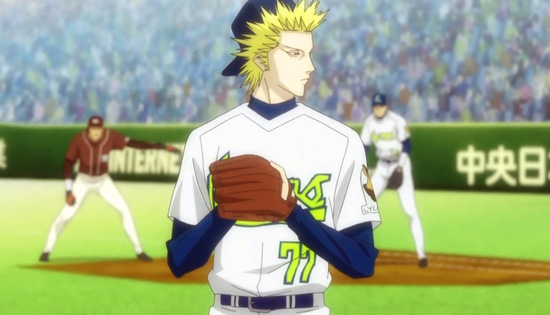
One Outs
Based on a manga by Shinobu Kaitani, serialized in Business Jump from 1998-2006, this 25 episode TV anime ran from 2008-2009. Perhaps spurred on by the anime adaptation’s production, the previously halted manga restarted just prior to the airing of the first episode.
One Outs is unique among the other series here, as it’s a fusion of baseball series with the gambling genre. It focuses less on traditional baseball play and tactics than gambling series style mind games. Prodigy and star batter Hiromichi Kojima is on the continually losing Lycaons team and finds himself in a slump. Not wanting to abandon the Lycaons or end his career on such a downward note, he heads to a private training camp in Okinawa. He and his teammates stumble upon a form of baseball gambling known as One Outs: a highly simplified game with only a pitcher facing off against a batter. The undefeated king of One Outs is pitcher Tokuchi Toua, a slow speed pitcher with icewater in his veins and the unnerving ability to get inside his opponents’ heads and find the perfect way to trip them up. Kojima manages to win Toua over to the Lycaons where he signs an odd gambling based contract, the “One Outs Contract.” Maybe the Lycaons can finally break their slump, if the team’s owner doesn’t ruin it in an effort to sabotage Toua.
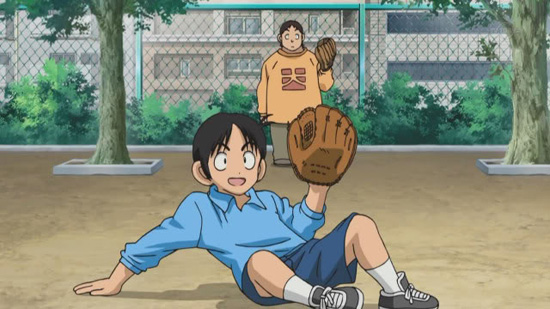
Cross Game
It’s 2009 and Adachi is still going strong as the master of baseball manga, with the now airing anime adaptation of his manga Cross Game, ongoing in Shonen Sunday since 2005. Currently the manga stands at around 15 volumes with the anime planned for 26 episodes.
The series is very similar to Adachi’s mega-hit Touch. Koh Kitamura, son of a sporting goods store owner, is childhood friends with the four Tsukishima daughters of the Clover cafe and attached batting center: Ichiyo, Wakaba, Aoba and Momiji. Koh and Wakaba are inseperable, and seem destined to be a couple. Aoba, an excellent natural pitcher, resents Koh for monopolizing her beloved older sister and refuses to believe Wakaba’s statements about Koh’s pitching potential. Koh shows little outward enthusiasm for baseball, but when tragedy strikes the Tsukishima family he begins to apply himself seriously toward reaching Koushien. Along the way, Aoba acts as a rival and mentor to Koh.
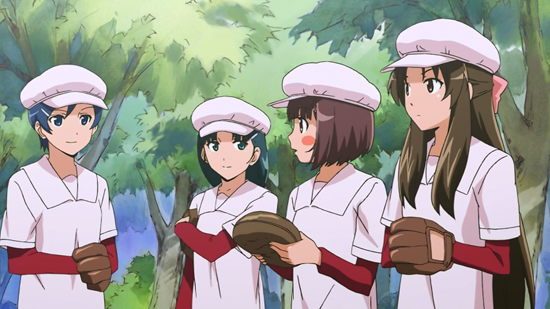
Taisho Baseball Girls (Taisho Yakyuu Musume)
The newest baseball series, based off a seinen light novel series by Atsushi Kagurasaka, Taisho Baseball Girls is currently airing this season. Sadly, no simulcast arrangements have been made for it. The series stands out from others on this list due to its historical setting, but it bears the closest resemblance in cast and storyline to Princess Nine.
Set in 1925, the story centers around Koume Suzukawa, daughter of a Western-style restaurant owner, who begins attending one of the all girls academies recently established in Japan. Her classmate Akiko Ogasawara, daughter of a rich family, resents her baseball player fiancée for declaring that women should stay in the home and have no need for education. Determined to prove that women are just as capable as men, she decides to form a girls’ baseball team at her school and challenge him at his own specialty. Sports are considered vulgar and unladylike, so the girls have to contend not only with learning how to play from step one but also disapproval from school and parents, and difficulty finding other teams to practice with.
—–
This story was originally posted in August 2009.


